Whether you’ve grown out of self-fulfillment or are entering a rapid phase of growth, it may be worth evaluating your current logistics operations. In ecommerce, there comes a time when the cost, complexities, and demand of your situation require a better-aligned fulfillment solution.
A third-party logistics (3PL) provider can offer extensive value to retail businesses. However, it’s critical to choose the right partner. As many brands know, the outsourcing process is often lengthy and fraught with decisions.
But as with anything, when prepared, you can enter the process with the information you need to have the right conversations, make swift decisions, and reduce the risk of selecting a 3PL provider that’s a poor fit.
Understanding 3PL services
For fast-growing brands, it gets hard to handle all the tasks that go with warehousing, order fulfillment, and shipping in-house. That’s when considering a 3PL service becomes worthwhile. Third-party logistics providers are the expert partners that handle the heavy lifting, from storage and inventory management to picking and packing and getting orders to a customer’s front door.
A 3PL provider streamlines operations, freeing up time, reducing overhead, and even improving customer satisfaction. But here’s the catch: choosing the right 3PL partner isn’t as simple as picking a provider off a Google search. It takes thoughtful preparation and careful groundwork to ensure your chosen 3PL can genuinely meet your unique business needs.
Prepping to engage potential 3PL providers
Doing some prep goes a long way in finding a logistics partner that feels more like an extension of your business rather than just another vendor. If you jump straight into the conversation, you might find yourself engaged in drawn-out negotiations, mismatched expectations, or, even worse, dealing with hidden costs and logistical nightmares down the road.
That’s why it’s essential to get your ducks in a row before you make contact. Take the time to gather detailed order data and comprehensive product information and set clear operational goals. It will help streamline your initial discussions while allowing 3PLs to give you accurate quotes and realistic timelines. The more clarity you can bring to the table, the better the chance of finding the right 3PL match.
5 Ways to prep for a 3PL search
Each retailer is unique and has differing needs based on product types and size, order volume, packaging, customer expectations, and shipping timelines. These specific requirements make choosing the right 3PL for your brand critical. When it’s a good fit, your 3PL partner enhances efficiency, allowing you to scale effortlessly.
By evaluating your operations and needs before reaching out to 3PL providers, you’ll be better prepared to make a swifter choice that enhances your retail business. Prep by:
1. Setting clear operational goals and scope
What are your goals in using a 3PL? Faster shipping times, reduced fulfillment costs, access to expertise or modern fulfillment technology, or better customer service? Are your needs taking up too much of your time? Are you ready to put that focus on core competencies and innovation?
Clarify where your operations are suffering and what you want to outsource. For example, storage, inventory management, picking, packing, shipping, custom labeling and packaging, cross-docking, freight forwarding, kitting and assembly, returns processing, or transportation. To give an accurate scope of work, brands should come with information regarding:
- Which logistics functions they want to outsource.
- Operational details like handling, product dimensions, and storage requirements.
- Expectations around reporting, communication, and growth potential.
2. Providing accurate and detailed order data
Your partner should be aware of any volume spikes your brand may experience. For example, if you’re an apparel brand selling swimwear, you’ll need increased fulfillment capacity right before the summer. Historical order data lets 3PL partners provide more accurate quotes and appropriate capacity planning. Plan to bring monthly and seasonal order volume, peak season data, past fluctuations in demand, and average orders per month.
3. Giving comprehensive SKU information
SKU volume varies wildly by industry, and the total number of unique products a business carries impacts inventory management and demand forecasting. For example, an apparel or cosmetics company is likely to have a much higher number of SKUs than a food and beverage manufacturer.
The total number of SKUs, dimensions and weight for each, and special handling requirements (e.g., fragility or temperature sensitivity) will affect pricing and storage decisions. It also lets the brand’s potential 3PL service to ensure better inventory management and tracking, order fulfillment, warehouse operations, and demand forecasting as things get up and running.
4. Offering realistic inventory and growth projections
Although a brand may fit well with a 3PL provider initially, they need to make sure they fit with them long term as well. This is why growth projections are invaluable to have on hand for conversations to ensure the ability to scale.
Bring future order volume growth, SKU count growth, and potential channel and geographic market expansion plans. Bring your retail vision: Will you be expanding into brick and mortar, a new region, or an online marketplace?
These projections can help you find a 3PL partner that’s able to scale and adapt along with your business.
5. Sharing clearly documented standard operating procedures (SOPs)
Your standard operating procedures (SOPs) are mission-critical to successful retail fulfillment. You’ll want to share clearly documented SOPs with potential 3PL partners. Your SOPs should include:
- Each fulfillment task, broken down into core areas, such as order receipt, picking, packing, labeling, and returns. It may include packaging guidelines, special customer instructions, or returns processing.
- Details for each step-by-step procedure. Think shipping preferences: what carriers, methods, or speeds are used.
- Visual aids if possible, using written instructions alongside images, diagrams, and videos. Think of it like this: A video of packing standards helps reduce ambiguity and errors.
In fulfillment, SOPs play a central role in maintaining service quality, avoiding misunderstandings, and minimizing errors during onboarding.
Treat your 3PL partnership like a long-term relationship
To keep from breaking up with your 3PL, you’ll need to set expectations at the beginning, offer clear communication, and take a look at the past before jumping into the future. Clear, detailed preparation streamlines negotiations and secures better pricing and lays a strong foundation for a successful long-term partnership.
Ready to get started or have questions? Reach out to one of our fulfillment experts today—we’re here to help you navigate every step of your 3PL journey.





